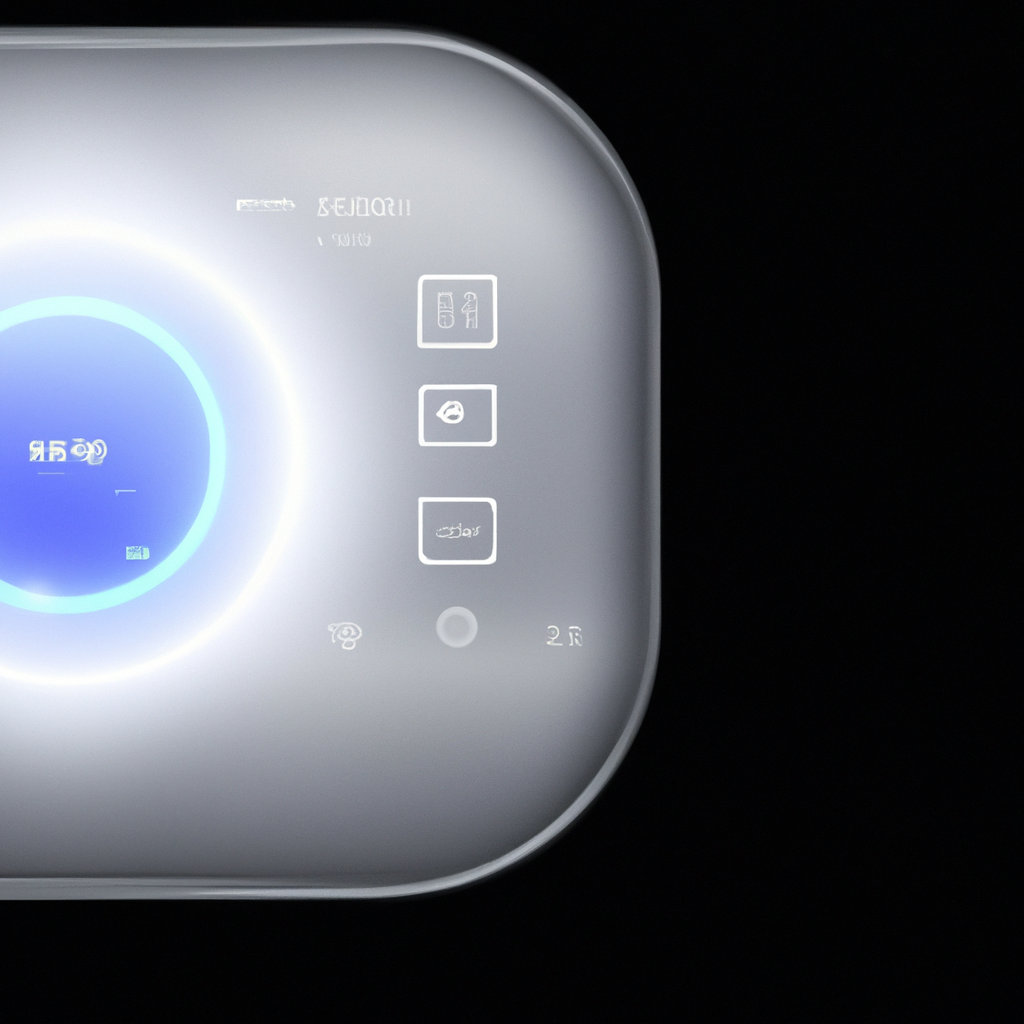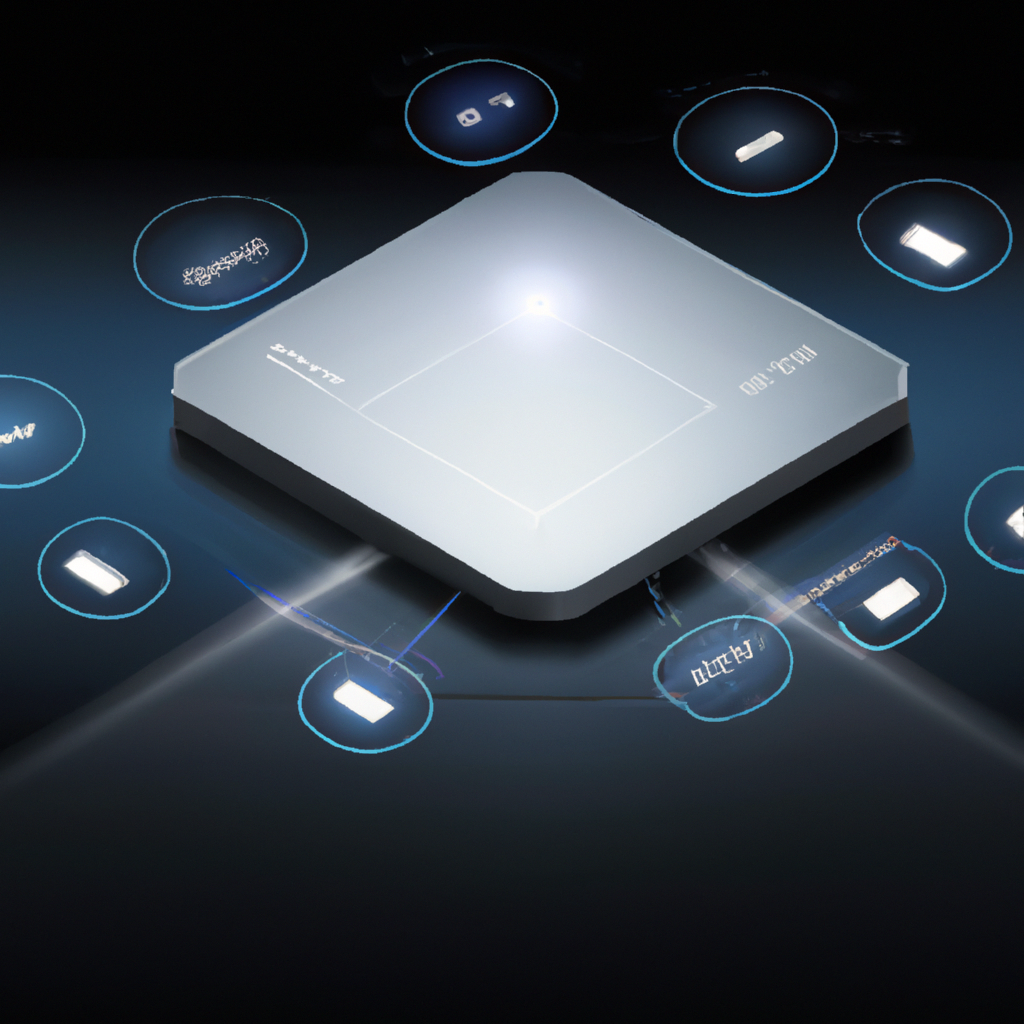If you’ve ever wondered about the inner workings of a smart home automation network, this article is for you. In this article, we will explore the crucial role that hubs and controllers play in creating a seamless and efficient smart home experience. From managing all your connected devices to providing a centralized control system, hubs and controllers are the unsung heroes that make the magic happen in your smart home. So, grab a cup of coffee, sit back, and let’s unravel the mysteries of hubs and controllers in a smart home automation network.
Understanding the Role of Hubs and Controllers in a Smart Home Automation Network
Smart home automation has revolutionized the way we live, bringing convenience, efficiency, and security to our daily lives. At the heart of any smart home automation system are hubs and controllers, which serve as the central command centers, allowing you to control and monitor various devices and systems in your home. In this article, we will explore the role of hubs and controllers in a smart home automation network, their functions and features, and the benefits they bring. We will also discuss the challenges and considerations in implementing hubs and controllers, along with real-life case studies and future trends in this field.
1. Introduction to Smart Home Automation
1.1 Definition of Smart Home Automation
Smart home automation refers to the implementation of intelligent systems and devices to control and manage various aspects of a home, such as lighting, temperature, security, entertainment, and more. These systems are interconnected through a network and can be controlled remotely, providing homeowners with convenience, energy savings, and enhanced security.
1.2 Advantages of Smart Home Automation
The advantages of smart home automation are numerous. Firstly, it offers convenience by allowing users to control their home devices and systems remotely. Whether it’s adjusting the thermostat, turning off the lights, or checking security cameras, you can do it all from your smartphone or tablet. Secondly, smart home automation improves energy efficiency by optimizing the use of appliances, reducing energy wastage, and providing real-time energy consumption data. Additionally, it enhances security and safety through features like smart locks, video doorbells, and motion sensors. Lastly, smart home automation systems can be personalized and customized according to individual preferences, providing a tailored experience for each user.
1.3 Components of a Smart Home Automation System
A smart home automation system consists of several components that work together to create a seamless and interconnected network. These components include hubs, controllers, sensors, actuators, devices, and communication protocols. Hubs and controllers serve as the core components that enable communication and control within the system.

2. Hubs in a Smart Home Automation Network
2.1 Definition and Purpose of Hubs
Hubs, also known as smart home hubs or central hubs, are the central command centers of a smart home automation network. They act as intermediaries between various devices and systems, allowing for communication, control, and coordination. Hubs serve as a single point of control and provide a unified interface for managing all connected devices and systems.
2.2 Types of Hubs
There are different types of hubs available in the market, each with its own set of features and capabilities. Some hubs are designed to be standalone devices, while others are integrated into other devices such as smart speakers or routers. The two main types of hubs are:
Standalone Hubs: These hubs are dedicated devices solely focused on managing the smart home automation network. They often come with built-in connectivity options such as Wi-Fi, Bluetooth, or Zigbee, allowing them to communicate with a wide range of devices.
Integrated Hubs: These hubs are integrated into other devices, such as smart speakers or routers, combining the functionality of a hub with additional features. For example, a smart speaker with an integrated hub allows you to control both your home automation system and play music or interact with voice assistants.
2.3 Functions and Features of Hubs
Hubs offer a variety of functions and features that make them essential components in a smart home automation network. Some common functions and features include:
Device Management: Hubs provide a centralized platform for managing and controlling all connected devices, allowing you to monitor their status, schedule tasks, and receive notifications.
Communication: Hubs facilitate communication between different devices and systems by acting as a bridge, enabling interoperability and integration.
Automation: Hubs support automation by allowing you to create custom rules and routines, enabling devices to work together seamlessly. For example, you can create a rule that turns on the lights when the motion sensor detects movement.
Remote Access: Hubs enable remote access, allowing you to control and monitor your smart home devices from anywhere using a smartphone or tablet.
3. Controllers in a Smart Home Automation Network
3.1 Definition and Purpose of Controllers
Controllers, also known as control panels or touch panels, are devices that provide a user interface for managing and interacting with the smart home automation system. Controllers allow users to control individual devices or groups of devices, set schedules, adjust settings, and receive feedback and notifications.
3.2 Types of Controllers
Just like hubs, controllers come in different forms and types, catering to different user preferences and requirements. The main types of controllers include:
Wall-Mounted Controllers: These controllers are typically mounted on walls and provide a fixed point of control within a specific area of the home. They often come with touchscreens or physical buttons for navigation and interaction.
Portable Controllers: Portable controllers are handheld devices that allow users to control their smart home devices while on the move. These controllers usually connect to the home automation network via Wi-Fi or Bluetooth and offer a mobile user interface.
Voice Activated Controllers: With the advent of voice assistants such as Amazon Alexa and Google Assistant, voice-activated controllers have become increasingly popular. These controllers allow users to control their smart home devices using voice commands, adding a layer of convenience and hands-free interaction.
3.3 Functions and Features of Controllers
Controllers provide users with a wide range of functions and features, making it easier to interact with their smart home automation system. Some common functions and features include:
Device Control: Controllers allow users to control individual devices or groups of devices, such as turning lights on/off, adjusting thermostat settings, or opening/closing smart blinds.
Scene and Mode Control: Controllers enable users to create and activate predefined scenes or modes, which involve multiple devices and settings. For example, you can create a “Movie Night” scene that dims the lights, lowers the blinds, and starts playing your favorite movie on the TV.
Feedback and Notifications: Controllers provide feedback and notifications to users, keeping them informed about the status of their devices and systems. For example, a controller may notify you if a door is left open or if a security camera detects motion.
User Profiles and Personalization: Controllers support user profiles, allowing different users to have their own preferences and settings. This enables a personalized experience for each user and ensures that the system adapts to their individual needs.

4. Integrating Hubs and Controllers in a Smart Home Automation Network
4.1 Interoperability and Compatibility
One of the key considerations in integrating hubs and controllers in a smart home automation network is interoperability and compatibility. It is important to ensure that the hubs and controllers you choose are compatible with the devices and systems you plan to integrate. This can be achieved by selecting hubs and controllers that support widely adopted communication protocols and standards, such as Zigbee, Z-Wave, or Wi-Fi.
4.2 Communication Protocols
Communication protocols play a vital role in connecting and controlling devices in a smart home automation network. Hubs and controllers should support multiple communication protocols to ensure compatibility with various devices. Some common communication protocols used in smart home automation include Zigbee, Z-Wave, Wi-Fi, and Bluetooth. Each protocol has its own advantages and limitations, and the choice of protocol depends on the specific requirements of your smart home automation network.
4.3 Centralized vs. Decentralized Control
When integrating hubs and controllers, you also need to consider the control architecture of your smart home automation network. Centralized control involves having a single hub or controller that acts as the central command center, while decentralized control distributes control capabilities across multiple hubs or controllers. The choice between centralized and decentralized control depends on factors such as the size of your home, the number of devices, and the level of customization and control you desire.
5. Benefits of Hubs and Controllers in a Smart Home Automation Network
5.1 Improved Efficiency and Convenience
One of the key benefits of hubs and controllers in a smart home automation network is improved efficiency and convenience. With a central hub or controller, you can easily manage and control all your smart home devices from a single interface, eliminating the need for multiple apps or remotes. This centralized control allows you to automate tasks, create schedules, and customize settings according to your preferences, making your daily life easier and more efficient.
5.2 Enhanced Security and Safety
Hubs and controllers play a crucial role in enhancing the security and safety of your smart home automation system. By integrating security devices such as door/window sensors, motion detectors, and surveillance cameras, you can receive real-time notifications and monitor your home remotely. Controllers also enable features like arming/disarming security systems, locking/unlocking doors, and even simulating occupancy to deter potential intruders.
5.3 Energy Conservation
Smart home automation systems, powered by hubs and controllers, offer significant energy conservation benefits. By integrating energy management devices such as smart thermostats, lighting controls, and energy monitors, you can optimize energy usage based on occupancy and preferences. Hubs and controllers enable you to create schedules, establish energy-saving modes, and monitor energy consumption, resulting in reduced energy bills and a greener footprint.
5.4 Personalization and Customization
With hubs and controllers, smart home automation becomes a truly personalized experience. You can create user profiles that reflect individual preferences for lighting, temperature, and entertainment settings. Controllers allow you to set up scenes or modes tailored to specific activities or moods, such as “Morning Routine” or “Party Mode.” This level of personalization and customization enhances comfort and enjoyment in your smart home.
5.5 Remote Access and Monitoring
Hubs and controllers enable remote access and monitoring, allowing you to stay connected to your smart home even when you’re away. Through smartphone apps or web interfaces, you can remotely control devices, receive real-time notifications, and monitor the status of your home. This remote access provides peace of mind and enables you to take immediate action if necessary, whether it’s adjusting the thermostat, turning off lights, or checking security camera feeds.

6. Challenges and Considerations for Hubs and Controllers in a Smart Home Automation Network
6.1 Network Reliability and Stability
One of the challenges in implementing hubs and controllers in a smart home automation network is ensuring network reliability and stability. The network infrastructure must be robust enough to handle the communication and control needs of all connected devices. Factors such as signal range, interference, and network congestion need to be addressed to ensure a seamless experience.
6.2 Privacy and Data Security
Privacy and data security are major concerns in any smart home automation network. Hubs and controllers handle sensitive personal data and must adhere to stringent security protocols to protect user privacy. It is important to select hubs and controllers from reputable manufacturers that prioritize data protection and offer robust encryption and authentication mechanisms.
6.3 Scalability and Future Proofing
As your smart home automation system grows, scalability becomes a consideration. Hubs and controllers should be capable of accommodating a growing number of devices and systems without compromising performance or stability. Future-proofing is also important, as advancements in technology may introduce new devices and standards. Selecting hubs and controllers that support upgradable firmware and are adaptable to evolving technologies ensures long-term compatibility.
6.4 Cost and Affordability
The cost factor is another consideration when implementing hubs and controllers in a smart home automation network. Costs include the initial investment in hubs and controllers, as well as ongoing expenses for additional devices and maintenance. It is important to evaluate the features and capabilities offered by different hubs and controllers and assess their value in relation to your specific needs and budget.
6.5 User-Friendliness
User-friendliness is a critical aspect of hubs and controllers, as they serve as the primary interface for homeowners. The ease of use and intuitiveness of the user interface can greatly impact the user experience. Hubs and controllers should offer a visually appealing and responsive interface, with clear instructions and intuitive navigation, ensuring a seamless and enjoyable interaction for all users.
7. Case Studies: Successful Implementations of Hubs and Controllers in Smart Home Automation
7.1 Case Study 1: Smart Hub Integration for Enhanced Home Automation
In this case study, a homeowner integrated a smart hub into their existing home automation system. The smart hub served as a centralized control center, allowing the homeowner to manage and control various devices and systems from a single interface. By integrating sensors, smart thermostats, smart lighting, and security cameras, the homeowner was able to enhance comfort, energy efficiency, and security. The smart hub enabled custom schedules, automated routines, and remote access, providing a seamless user experience and improved quality of life.
7.2 Case Study 2: Controller-based Smart Home System for Energy Management
In this case study, a homeowner implemented a controller-based smart home system focused on energy management. The controller allowed the homeowner to control and monitor energy usage through a mobile app. By integrating smart thermostats, energy monitors, and smart plugs, the homeowner was able to optimize energy consumption and reduce utility costs. The controller provided real-time energy consumption data, allowing the homeowner to make informed decisions and adjust settings to achieve energy-saving goals.
7.3 Case Study 3: Voice-Activated Control in a Smart Home Automation Network
In this case study, a homeowner implemented voice-activated control in their smart home automation network. By integrating a voice-activated controller with their existing devices and systems, the homeowner was able to control their smart home using natural language commands. The controller, equipped with advanced natural language processing capabilities, understood and executed voice commands, providing a hands-free and convenient user experience. Voice-activated control enhanced accessibility and convenience, allowing the homeowner to interact with their smart home effortlessly.

8. Future Trends and Innovations in Hubs and Controllers for Smart Home Automation
8.1 Artificial Intelligence and Machine Learning Integration
Artificial intelligence (AI) and machine learning (ML) are expected to play a significant role in the future of hubs and controllers for smart home automation. AI and ML algorithms can analyze user behavior, preferences, and patterns to automate and optimize various aspects of a smart home. Intelligent hubs and controllers will be able to learn and adapt to user routines, predict user needs, and make proactive adjustments to devices and systems.
8.2 Voice Assistants and Natural Language Processing
Voice assistants and natural language processing (NLP) will continue to be a key trend in hubs and controllers for smart home automation. Voice assistants, such as Amazon Alexa and Google Assistant, are becoming more sophisticated, offering improved voice recognition and understanding capabilities. Hubs and controllers with advanced NLP algorithms will be able to interpret complex voice commands and engage in natural conversations, making smart home control more intuitive and seamless.
8.3 Internet of Things (IoT) Integration
The integration of hubs and controllers with the Internet of Things (IoT) will bring additional functionality and connectivity to smart home automation networks. With IoT integration, hubs and controllers will be able to communicate and control a wide range of IoT devices and systems beyond the traditional smart home ecosystem. This integration will enable seamless interoperability and open up new possibilities for automation, control, and innovation.
8.4 Predictive Analytics and Contextual Adaptation
Hubs and controllers for smart home automation will increasingly incorporate predictive analytics and contextual adaptation capabilities. By analyzing data from various sensors and devices, hubs and controllers can anticipate user needs, preferences, and behavior patterns. This predictive capability allows for proactive adjustments and automation, optimizing the user experience and making smart homes more responsive to users’ daily routines and activities.
8.5 Integration with Smart Grids and Renewable Energy Sources
As the world moves towards a greener future, hubs and controllers will play a crucial role in integrating smart homes with smart grids and renewable energy sources. Through integration with utility APIs and smart meters, hubs and controllers can optimize energy usage based on real-time energy pricing and availability. They can also coordinate with renewable energy sources, such as solar panels, to maximize energy efficiency and reduce reliance on the grid.
9. Conclusion
Hubs and controllers are essential components in a smart home automation network, providing centralized control, communication, and coordination. They enable homeowners to effortlessly manage and control their devices and systems, enhancing efficiency, convenience, and security. The integration of hubs and controllers in a smart home automation network brings numerous benefits, including improved energy management, personalization, and remote access. However, challenges such as network reliability, privacy, and future-proofing need to be considered when implementing hubs and controllers. With advancements in technology and future trends, hubs and controllers will continue to evolve, integrating AI, voice assistants, IoT, and predictive analytics to create smarter and more intuitive smart homes. Through successful case studies and innovative developments, hubs and controllers are shaping the future of smart home automation.











